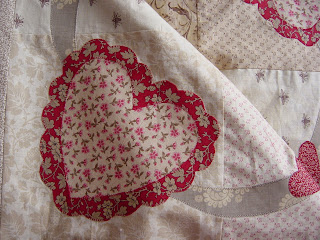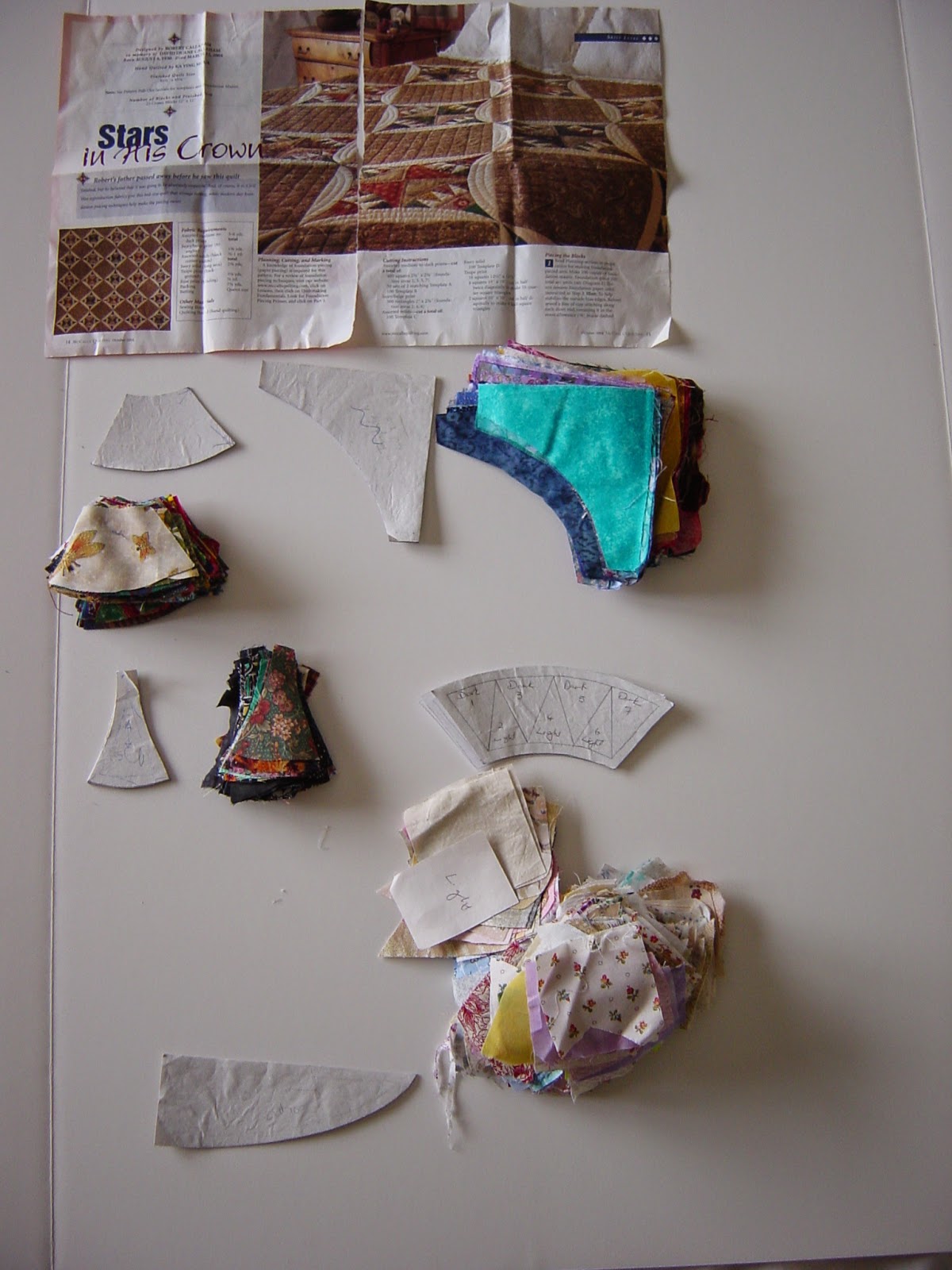Collecting all the clues, instructions.
Next, making the templates, cereal boxes work well for large templates. Just trace shapes on freezer paper, using the pull out sheet in the magazine. Then iron onto cardboard. Cut out and the shapes are ready for use.

The templates make it effective, when the pattern repeat the same shape, many times. Tracing it on the Heat and Bond, is a quick process. Once fused to the back of the fabric, one only need to cut once, as all the layers are together, as one layer. This works well for the larger pieces. The scalloped hearts and swags.
This quilt was all machine appliqued and pieced. With all the applique, a layer of Heat and Bond Lite, was fused to the wrong side of the fabric. Once all the pieces was ready to be fused to the background fabrics, the paper layer at the back of the applique was removed. Using a hot iron, the pieces was fused in place.
The Heat and Bond Method:
1. Place the Heat and Bond on top of the pull out pattern, with the paper side on top.
2. Trace on the paperside of the Heat and Bond.
3. Cut out Heat and Bond, fuse, to the wrong side of the fabric, shiny side on the the wrong side of the fabric. This is the side that will stick to the fabric, once it is fused.
4. Fused leave on background.
Amazing how green everything is, just the other day it was all covered in snow.
This quilt was done in a medallion style. Each round, different to the last one.
The first part was all applique.
Then pieced, with swags and hearts to compliment the center applique. Blocked with sashings,
Pieced blocks, more butterflies and sashings.....
This one was inspired by a fat quater bundle (French General, Rouenneries Deux), which made for a fun project. Just getting creative, with the challenge of using only the fat quater bundle.
As for when it will get quilted, time will tell. As with a few other projects, especially the ones in the garden.
Up until this pattern came along, mystery quilts never quite pulled at my heart strings, until this one happened.



































